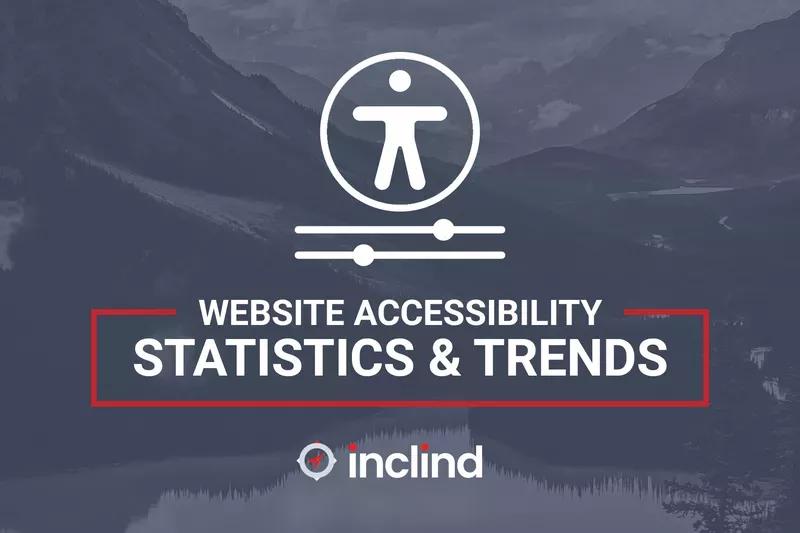As you go about your day-to-day life, you probably see many things designed for accessibility. For example, you may see handicapped parking spaces, curb cuts for wheelchair access, and accessible stalls in public restrooms. What you may not notice, however, is accessibility features on something that most of us use every day: the internet.
Website accessibility is just as important as physical accessibility. Unfortunately, many websites are not fully accessible, which can limit access for people with disabilities. Our website accessibility audits can help you determine what improvements to make to your site, which we can then implement and maintain to ensure you follow the latest standards.
At Inclind, we know that accessibility and inclusion are important for business. Our team of talented website designers and developers works to ensure that every website we create meets or surpasses current accessibility guidelines. We offer website accessibility audits to identify and fix accessibility issues with your website. Reach out to learn more or to schedule a consultation.
What Is Website Accessibility, and Why Does It Matter?
Web accessibility involves designing and developing websites and other technology so that people with disabilities can use (access) them. The concept was formed in 1996 with the Web Accessibility Initiative (WAI). Today, the Americans with Disabilities Act (ADA) requires websites that are open to the public to be accessible so that people with disabilities can navigate, interact with, and contribute to them.
When it comes to websites, accessibility should include adaptations for any disability that may impact a person’s ability to access the internet. This may include visual, auditory, cognitive, neurological, physical, and speech disabilities. A bonus of website accessibility work is that it benefits people without diagnosed disabilities, such as those whose eyesight worsens as they age.
A common example of website accessibility is using high-contrast colors for the text and background so that people with visual limitations can either read the text and/or use a screen reader. Having lighter text - such as a light gray - on a lighter background can make reading very hard. Using high-contrast text (like black text on a white background) makes it easy for people with vision disabilities and almost everyone else to read your website.
Website accessibility is incredibly important given how much people rely on the internet to get information. In the past, a person might have called the operator or opened the yellow book to find a business. Today, these same searches happen online - millions of times a day. If people with disabilities can not access the internet or a particular website, it effectively denies them equal access to information. Using accessibility tools is the best way to ensure that everyone can utilize your website.
This is important for purposes of inclusion and fairness. It is also a good decision from a business perspective. According to the Centers for Disease Control and Prevention, 27% of American adults are disabled. If your website isn’t accessible, you may miss out on 1/4th or more of customers, donors, and/or supporters.
Website Accessibility Stats and Trends
Worldwide, an estimated 1.3 billion people experience a significant disability, which is the equivalent of 16% of the world’s population. People with disabilities represent a substantial market share, with the total after-tax disposable income for working-age people with disabilities in the United States estimated at $490 billion.
Approximately 75% of Americans with disabilities use the internet daily. 62% of American adults with disabilities own a computer, and 72% own a smartphone. By comparison, 81% of people without disabilities own a computer, and 88% own a smartphone.
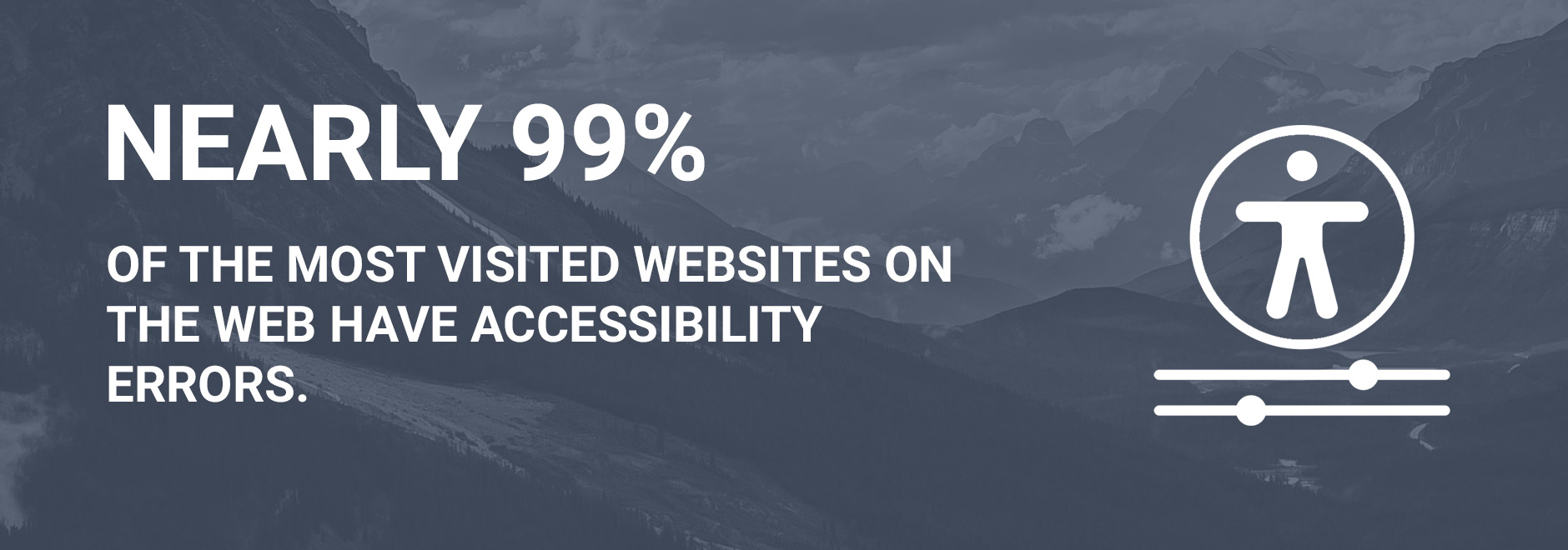
The State Of Web Accessibility
For the past five years, Web Accessibility in Mind (WebAIM) has conducted an accessibility evaluation of the home pages for the top 1,000,000 websites. In 2023, WebAIM found 49,991,225 distinct accessibility errors across these 1 million home pages. On average, there were 50 errors per page. This number represents nearly 99% of all home pages for the most popular and most visited websites.
Based on this evaluation:
- Users with disabilities would expect to encounter errors on 1 in every 21 home page elements with which they engage.
- 96.3% of home pages failed the Web Content Accessibility Guidelines 2 (WCAG 2), a slight improvement from 96.8% in 2022.
- The most common WCAG 2 failures include low-contrast text, missing alternative text for images, empty links, missing form input labels, empty buttons, and missing document language.
- Low-contrast text was found on 83.6% of all home pages.
- Missing alternative text (alt text) for images was found on 58.2% of all home pages.
- Empty links were found on 50.1% of all home pages.
- Missing form input labels were found on 45.9% of all home pages.
- Empty buttons were found on 27.5% of all home pages.
- Missing document language was found on 18.6% of all home pages.
- The top ten site categories with the most errors include:
- Adult content
- Real estate
- Shopping
- Sports
- News/weather/information
- Style and fashion
- Automotive
- Hobbies and interests
- Travel
- Arts and entertainment
- Government websites had the fewest errors out of any website category.
- English language pages had the fewest accessibility errors out of any language site.
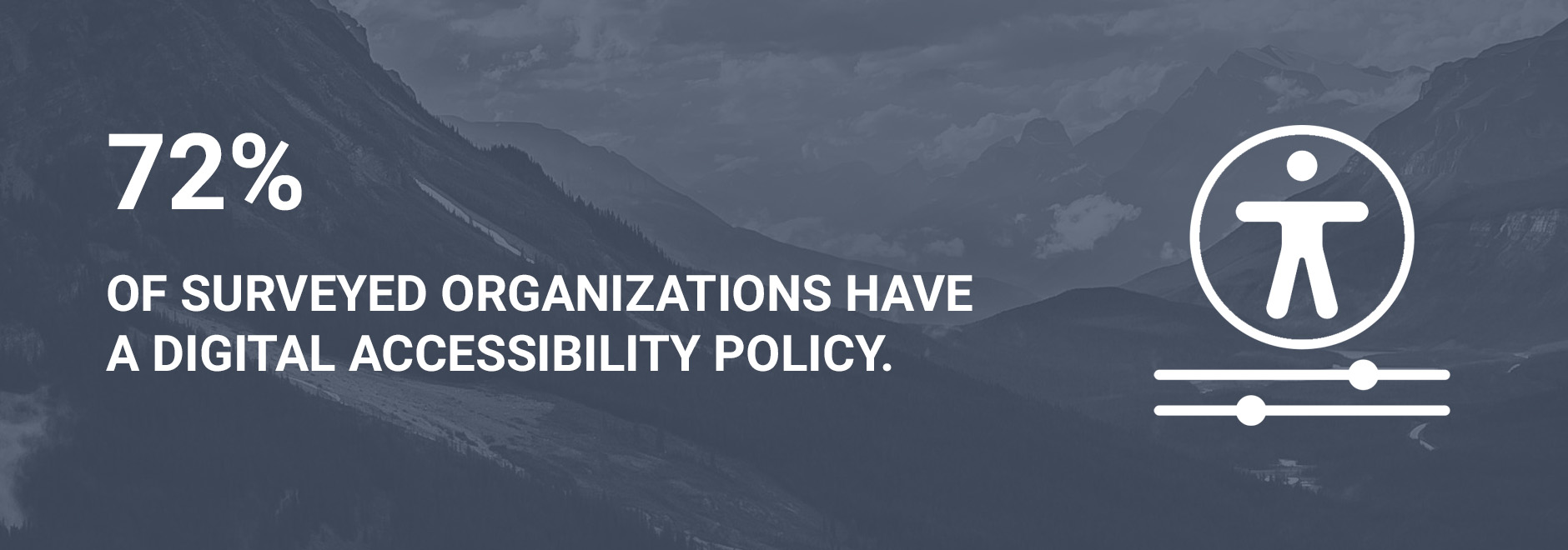
Implementation Of Digital Accessibility Policies
While gains in accessibility have been made, there are still huge gaps. According to Level Access, 72% of survey respondents stated that their organizations have a digital accessibility policy, and 85% believe that web accessibility provides a competitive advantage for their organizations.
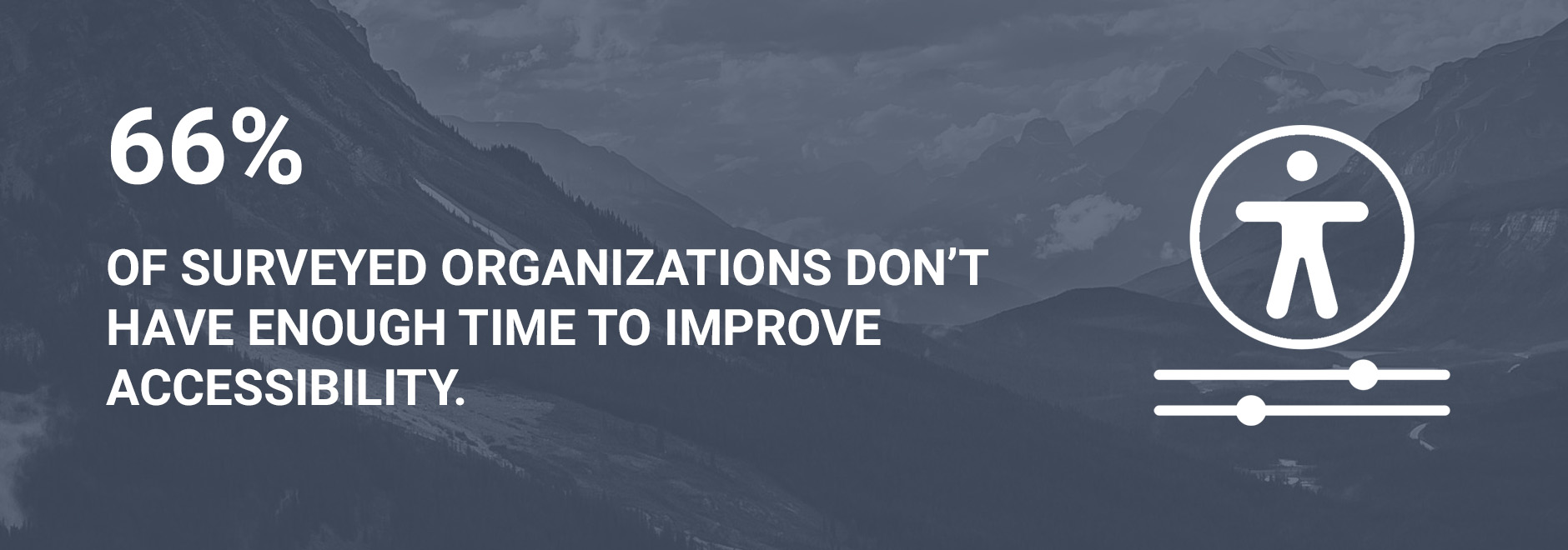
Roadblocks In Achieving Greater Accessibility
While many organizations want to implement more accessibility features, many run into limitations. 75% of survey respondents report that although their organizations want to improve digital accessibility, they have too many competing demands. 69% of respondents stated they lack time to address accessibility issues.
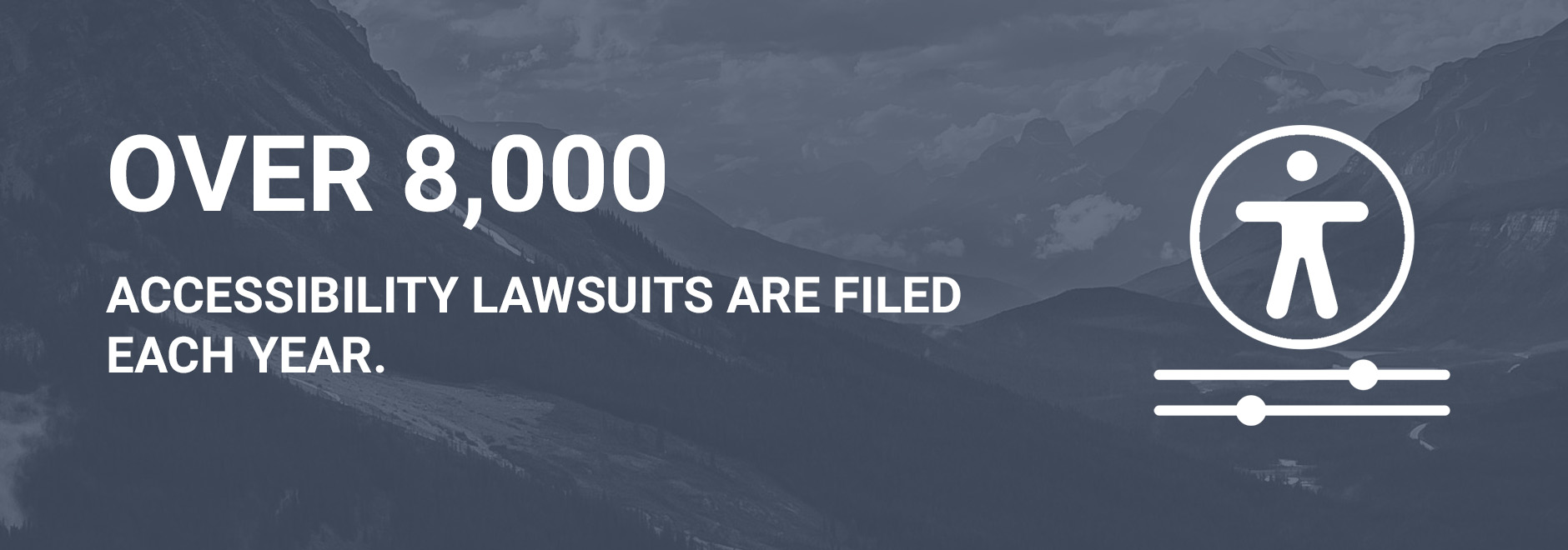
Prevalence Of Website Accessibility Lawsuits
Although 83% of respondents to the Level Access survey stated that they are somewhat confident in the accessibility of their organizations’ websites, 40% also admitted that their organizations have been involved in legal action related to disability within the past year. 53% of respondents and 80% of in-house attorneys believe that their organization is at risk of accessibility-related legal action within the next 12 months.
These numbers are reflected by federal court filings. In 2023, 8,227 lawsuits were filed in federal court under Title III of the ADA (the section related to accessibility for businesses, nonprofits, and other non-governmental entities). The most lawsuits were filed in the following states:
- New York: 2,759 cases
- California: 2,380 cases
- Florida: 1,415 cases
- Texas: 224 cases
- Illinois: 202 cases
- Pennsylvania: 189 cases
- Tennessee: 134 cases
- Missouri: 121 cases
- Georgia: 120 cases
- New Jersey: 115 cases
Significantly, these numbers represent lawsuits filed in federal courts, not state courts. For businesses and nonprofits alike, the potential for legal action based on web accessibility remains high.
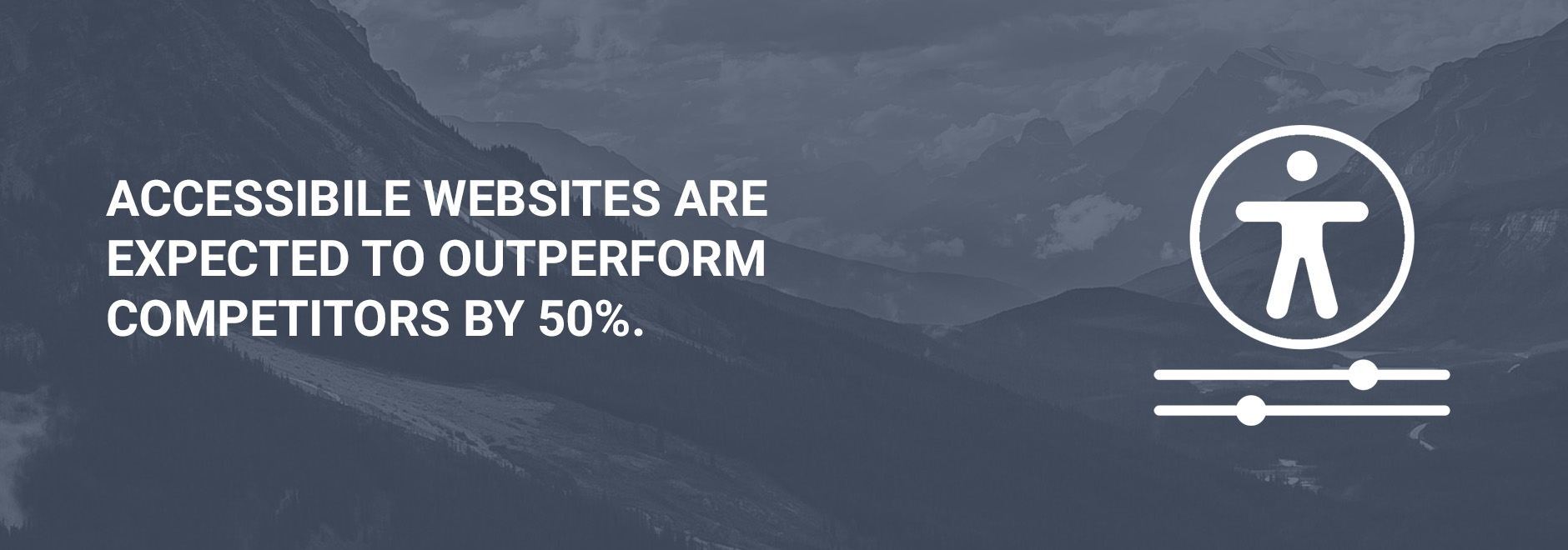
Market Advantages Of Accessible Websites
Beyond lawsuits, there are good business reasons to make sure that your website is accessible. Digital products that comply with WCAG 2 are expected to outperform market competitors by 50%. The reason why is simple: if 25% or so of your potential customers can’t use your site, then they won’t be able to make a purchase, book services, volunteer, donate, or do anything else.
Experienced Developers Can Help You Improve Site Accessibility
Of course, many businesses and nonprofits simply don’t have thetime, knowledge, or skill to handle their own digital accessibility. This is where Inclind can help. We offer a full range of digital accessibility services, including accessibility audits and ADA compliance services. We understand that many organizations don’t have the bandwidth to learn and implement WCAG 2 standards - so our goal is to make it as simple as possible for your business or nonprofit to have a well-designed, fully accessible website.
Our accessibility services are comprehensive. After analyzing your existing site, we will implement the proposed changes to improve accessibility. This can lead to a number of benefits, including:
- Analysis of disabled and non-disabled visitor statistics
- Avoid an ADA website lawsuit
- Improved SEO with a higher accessibility score
- Easier operable user interface and navigation
- Reliable interpretation for those with disabilities
- Understandable information and user interface
If you are concerned about the accessibility of your website, reach out today to talk to a member of our website design and development team.
Interested in Boosting Your Website’s Accessibility? Give Inclind a Call
The thought of tinkering with your website may seem daunting - even if it’s to do something necessary, like making the site more accessible. Fortunately, you don’t have to do it alone. Inclind can perform an accessibility audit of your site, implement WCAG 2 best practices, and then maintain your site and keep it updated with the latest standards.
Inclind works with businesses, nonprofits, healthcare organizations, member organizations, and other entities throughout the United States. We offer a full suite of services, from initial design and development to website redesigns, support and maintenance, and accessibility audits. We know that digital accessibility is critical both to ensure access for all and to reach your goals as an organization.
Want to learn more? Fill out our online contact form or hit the live chat button to talk to one of our experts about your website.
Unearth Our Day Hikes
Information Request
Please fill out the information below.
Schedule A Meeting
Please fill out the information below.
Schedule a Phone Call
Please fill out the information below.
Information Request
Please fill out the information below.
Submit a Request or RFP
Please fill out the information below.
